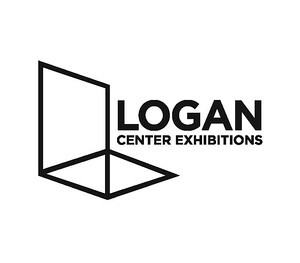November 20, 2015–January 10, 2016
Reva and David Logan Center for the Arts
915 E. 60th Street, 1st Floor
Chicago, Illinois 60637
United States
Hours: Tuesday–Sunday 9pm–9am
T +1 773 834 8377
logancenterexhibitions@uchicago.edu
Featuring: Jonathas de Andrade, Sammy Baloji, LaToya Ruby Frazier, Sreshta Rit Premnath and Melanie Smith
Presenting contemporary artworks across video, photography and sculpture, So-called Utopias examines the intersection of utopian visions with post-colonial and post-industrial sites. Traversing the dense forests of the Amazon to the urban sprawl of Bangalore, the works in this exhibition variously interrogate the use of architecture and urbanism as a mechanism of command and control over bodies and nature in the name of ideological gains. Taken together, they expose tensions between romanticized notions of utopian space and the reality of its physical manifestation.
In a selection of photographs, artist and activist LaToya Ruby Frazier documents her hometown of Braddock, a once-thriving steel town in Pennsylvania. Harboring grave human loss beneath deteriorating buildings and broken urban infrastructure, Braddock is laid bare as one of the many casualties of the decline of American industrialization.
The global impact of American industrialization is the subject of Melanie Smith’s Fordlandia, an immersive video installation portraying the eponymous industrial town and rubber plantation created by American industrialist Henry Ford deep within the Brazilian Amazon in the 1920s. Ultimately a failed business venture, in the years since its construction, nature has slowly reclaimed the city, almost burying its remains in flora and fauna. Smith’s piece revels in this dystopian landscape, pitting the triumph of nature over mankind’s expansionist impulse.
Failure is an essential function of Jonathas De Andrade’s Tombamento, a sculptural work comprising 506 glass slides embedded with photographs of the ocean tide rising and falling around the modernist building of the Alagoas Yacht Club in North East Brazil. Meandering in single file through the gallery, individual slides stand precariously next to each other—until a misstep or tremor forces them to topple. De Andrade’s work simultaneously reflects on how buildings approach, integrate, and accommodate nature within Brazil’s modernist tradition, while also meditating on the gradual decay of this heritage over time.
Questions of architectural legacy consume Sammy Baloji’s Essay on Urban Planning. Combining past and present aerial views of his hometown of Lubumbashi in the Democratic Republic of Congo with images of specimens of flies and mosquitoes, Baloji depicts the remnants of the city’s 500-meter-wide cordon sanitaire, established as part of an urban plan created by Belgian colonialists in 1910. Here architecture is revealed as a pretext for health, hygiene, and segregation in the colonial imagination.
Moving to recent urban developments in the global South, Sreshta Rit Premnath’s quasi-architectural installation explores the contradictory forces of globalism and nationalism. Projections (1964/2014) displays interwoven views of the Indian Pavilion at the 1964 New York World’s Fair and billboard advertising for a residential complex in 2014, with the slogan “New York Living in Bangalore.” In this work, two contradictory notions of utopia intersect: India as a global center adopting capitalist drives versus a nationalist imaginary that marks the country’s contemporary politics.
In a special reading presented during the exhibition opening, Premnath will read a few short experimental texts that take up the question of labor in urban development, as well as the projections of otherness that permeate utopian imaginings in so-called developed and developing countries.
So-called Utopias is curated by Yesomi Umolu, Exhibitions Curator, and is presented by Logan Center Exhibitions.
Logan Center Exhibitions
Logan Center Exhibitions presents contemporary art programming at the Logan Center Gallery and throughout the Reva and David Logan Center for the Arts at the University of Chicago. The aim of the program is to advance the inquisitive spirit of the university and the cultural vitality surrounding it through an open, collaborative and critical approach.


